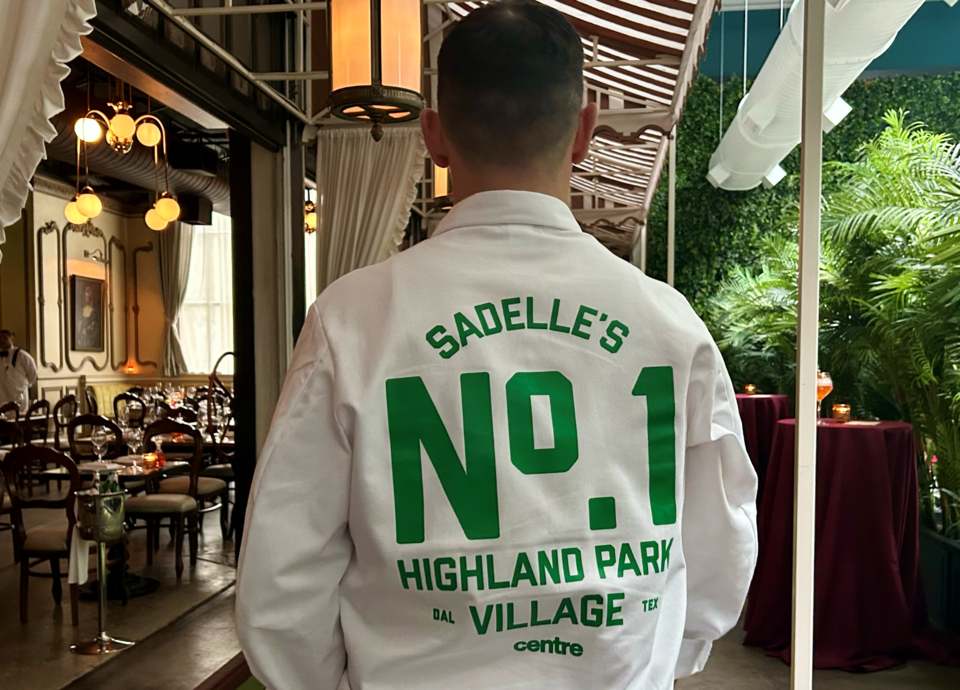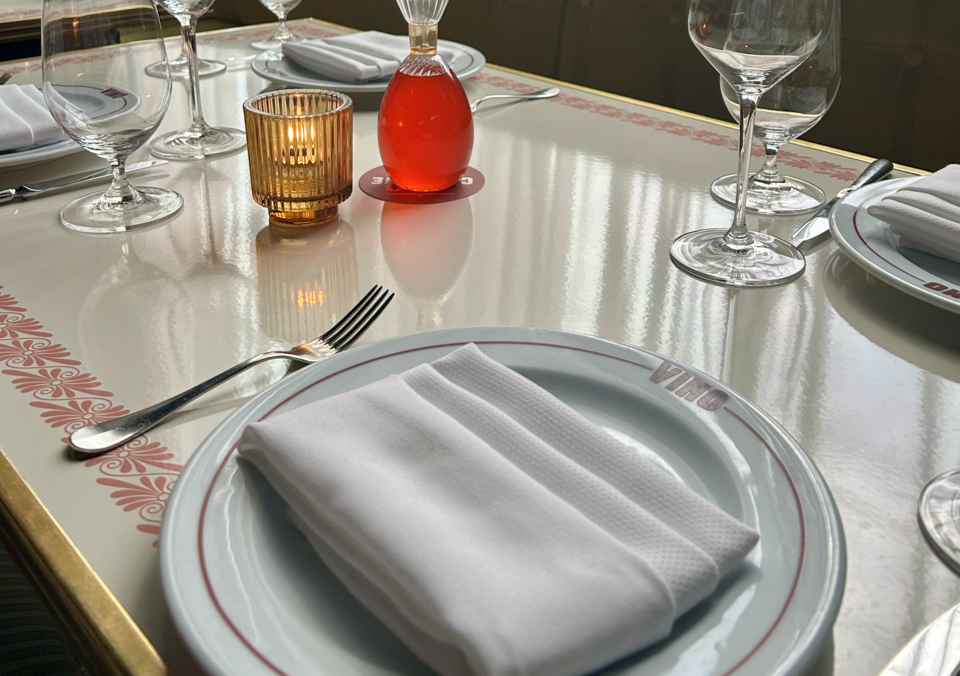This isn’t the first time I’ve interviewed famed chef Mario Carbone. It is, however, the first time I’ve played him in bocce.
Bocce is an Italian lawn game where players take turns tossing heavy balls, aiming to land them as close as possible to a smaller target ball called the pallino. It’s a slow, strategic sport — more finesse than force. While in college in New York, I used to play it with a friend in Washington Square Park. Carbone has played there, too. He tosses the bocce balls with a practiced, measured flick of the wrist. They roll with purpose toward the pallino. He’s not messing around — and I can already tell he’s better than me.
We’re on the patio at Vino, his restaurant in the Design District, right across from his namesake red-sauce joint, Carbone — a restaurant frequented by celebrities at its locations in Las Vegas, Miami and Dallas. (Heck, Drake even name-dropped it in a song.)
“There was a place I played bocce as a kid in Queens called Spaghetti Park, and I almost named my first restaurant after it,” Carbone tells me, pulling out his phone to Google photos. “Look at these guys. It was totally mobbed up.” I catch a glimpse: they’re wise guys. I toss a bocce ball in the air, and it rolls towards the pallino, knocking his ball out of the way.
The theatrics of this all — playing bocce at Vino, a time capsule to the late 1950s — feels like something out of a Scorsese movie. Carbone likes Goodfellas and Casino, which doesn’t surprise me. But the next film he brings up does: “I’m obsessed with the remake of The Thomas Crown Affair. I love Steve McQueen’s, but I think the one with Pierce Brosnan is phenomenal.”

In it, Brosnan’s character is an elegant, unflappable art thief. I’m surprised he mentioned The Thomas Crown Affair, especially the remake, a movie I saw in the theaters when it came out. But maybe that’s the thing with Mario Carbone: Just when you think you’ve got him pigeonholed, you don’t.
Bringing New York to Texas — and Texas to New York
Carbone isn’t in town just to play bocce. That’s a bonus. He flew in with the special menu he’s cooking that night, met with his chefs, and hosted an event at Sadelle’s for the clothing collaboration.
“Instead of just changing the menu and sending it to Dallas and saying, ‘Hey, here’s the menu,’ I’m physically bringing it here. That gives me the tool to work with the chefs, work with staff and see all the customers that are coming tonight.”
It’s his way of ensuring alignment — and keeping a finger on the pulse of what Texas diners want.
I first interviewed Carbone at Sadelle’s in Highland Park. He wore a crisp white chef’s jacket, his hair and stubble neat, and a vintage Cartier on his wrist. Today, he’s in a Sadelle’s butcher’s coat — a collab with Dallas streetwear brand Centre. Hair and beard: still perfectly trimmed. Cartier swapped for vintage Rolex.
That first time, he told me about bringing breakfast tacos to Sadelle’s — a dish he doesn’t serve in New York. Why? Because, well, Texas.
The second time we talked, he mentioned visiting Rosewood Ranches near Ennis. “I went to the ranch and spent a whole day with them and kind of fell in love with them,” he says. “Since then, I’ve done a couple of things with them. They came to New York and did a dinner with me, which was a lot of fun — like ranchers in cowboy hats dining in New York. It was a real My Cousin Vinny moment.”
That night, Carbone would be serving their steak as part of a special menu. As a New York chef with restaurants around the world, I assume there’s something special about Texas beef. So I ask him.
“I think it’s less about Texas and more ranch-to-ranch,” he says. “It’s really almost like a winery — how each rancher raises their cattle, the breeds they select, the feed they use, how they move them, where they move them, when they’re eating grass, when they’re not, the sun, the shade. There’s a lot to it that I still don’t know.”
“But to me,” he continues, “it reminds me much more of a winemaker than ‘Texas beef versus Northeast beef.’ I think it’s more nuanced.”
The Immigrant Experience
Carbone serves more than delicious food in style — he serves nostalgia, memory and a yearning for what once was. He calls his restaurant “part play, part functioning museum.” There’s theater in the setting and in the service. But this is also where time stops.
“Carbone is part of the immigrant migration process,” he tells me. “My grandparents were the beginning of it — leaving Italy and coming to America. And now I’m two generations removed from that.”

It’s a process that’s played out across North Texas — and the entire country — for hundreds of years.
“With every passing generation, the goal is a better life in America,” he says. “But with that comes dilution. The next generation has no choice but to be more diluted than the previous one. That’s the point.”
Things get lost. The potency fades.
“So if, for however long this Carbone experiment runs, what I’m trying to achieve in every restaurant is this idyllic, first-generation Italian American experience set in a specific time. Like a movie. Or a play.”
“I can say: Tonight is 1958,” he continues. “These are first-generation Italian Americans, born in New York, their parents from Italy. They speak English first. They were raised in New York. They made this restaurant. And then you can come and experience that. That’s why I say, functioning museum.”
I think of my own children: born in Japan, raised speaking only Japanese, attending only Japanese schools — until we moved to Texas. Now they speak English. They go to local schools. Their friends are Americans, well, Texans.
“With each passing generation,” Carbone says, “the only thing that’s left is in historical context: you’ll see it in movies, photos, menus, memories — things that are left behind. It’s sad, but that’s also the point of the migration experience. They’re Americans now. They’re no longer Italians. Yeah. They were Italians. Then Italian Americans. And now they’re Americans.”
Carbone tosses another bocce ball in the air. It rolls past mine and stops. We walk over to the pallino to see who is closer. He’s won. We pick up the bocce balls and start another round. Carbone tosses another ball in the air, and I wait my turn.
“I’m just trying to slow down or encapsulate Italian American for as long as I can,” he tells me. “I don’t know if that’s very romantic or sentimental.”
It’s both. And maybe that’s Carbone’s real secret sauce.
____
Hungry for more? Check out our dining guide.
Don't miss anything Local. Sign up for our free newsletter.




